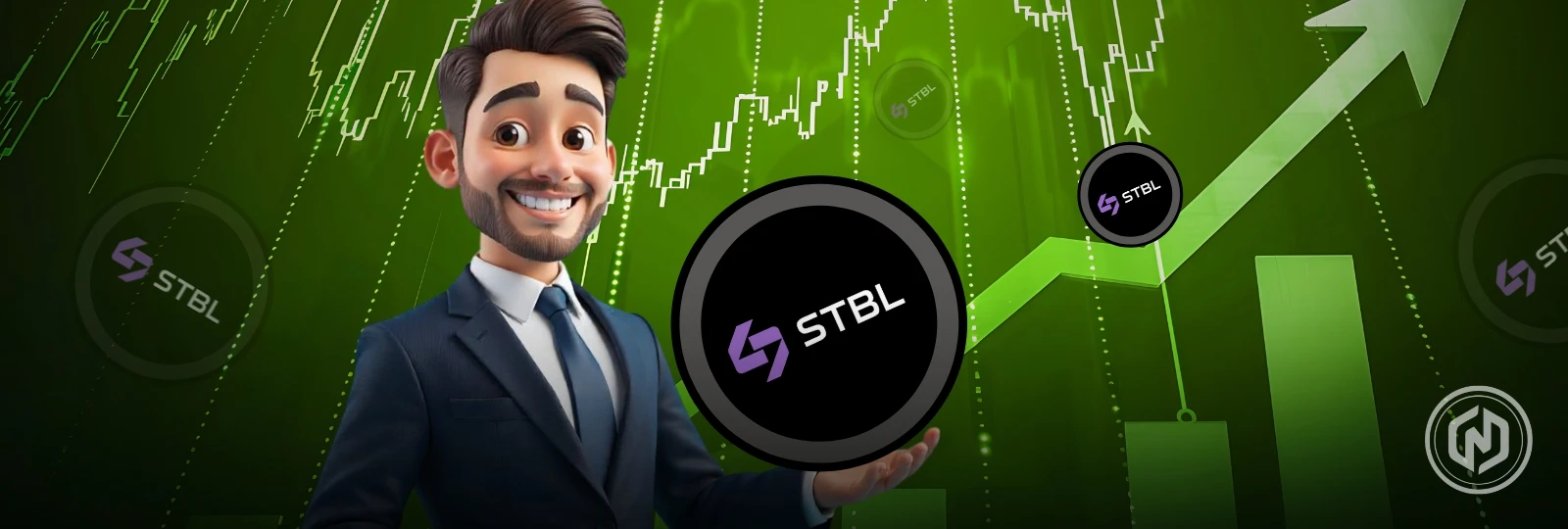What to Know:
- STBL unveils “Money-as-a-Service,” letting brands create their own programmable stablecoins.
- $1M Buyback aims to restore investor confidence and reduce supply.
- Cross-chain integration enhances USST stablecoin utility and market reach.
The STBL Protocol ecosystem, STBL, went up about 10.14% in the last 24 hours, breaking a longer-term downtrend and getting new attention. What stands out most is the project’s rollout of its new “Money-as-a-Service” (MaaS) offering and how this ties into broader moves by the team to restore confidence and utility.
MaaS Takes Centre Stage
STBL has positioned itself as an infrastructure provider that lets an ecosystem design, issue and scale its own stablecoin-style currency. Under the banner of “Money-as-a-Service (MaaS)”, the idea is that brands, platforms and communities won’t just launch tokens—they will launch full currencies. These currencies would be programmable, yield-sharing, embedded in their own economy and powered by the stablecoin USST.
What this means: Instead of one generic token system, STBL is offering a framework where each ecosystem can customise how value is captured and moves around. With transparency built in and the promise of “monetary sovereignty,” organisations can issue what the protocol calls “Ecosystem Specific Stablecoins (ESS)” under the STBL umbrella.
In an era where stablecoins and tokenised assets are proliferating, the move toward “brand currencies” is a fresh angle. If successful, MaaS could shift how value circulates in Web3: from general‐purpose tokens toward tailored economic systems.
Buyback Brings Confidence
Last week, STBL launched a $1 million buyback programme. Using a TWAP (time-weighted average price) method on PancakeSwap, the team began repurchasing tokens and placing them in a public vault.
Buybacks usually mean that the team thinks the token is worth more than it is, and putting the tokens in a clear vault makes people trust them more. The buyback is a real attempt to stop the slide, since STBL had been falling for 7 days (27.34%) and 30 days (75.18%).
Cross-Chain and Technical Signals
On the infrastructure side, STBL has integrated with Chainlink’s CCIP so that USST can move between chains and utilise Chainlink price feeds to support peg stability. This opens up broader use cases and ecosystem access.
The technical charts, on the other hand, show that STBL may have hit a short-term bottom. The RSI had dropped to a very low level of about 33, but it has since risen to about 40.5. The MACD histogram has also turned positive. For a lot of traders, these signals mean that the market might be about to turn around after a big drop.
Together, these explain the 10.14% uptick even while the 7-day and 30-day performance remained deeply negative -27.34% and -75.18% respectively. It suggests that market participants are giving STBL the benefit of the doubt. However STBL still faces headwinds. A monthly drop of 75% is serious. The stablecoin USST has had trust issues, for example, a prior de-peg to ~$0.96.
Final Thoughts
STBL’s climb isn’t just a random pump, it reflects a combination of meaningful strategic moves. The launch of the MaaS framework gives the project a compelling vision: brands designing currencies, ecosystems issuing stablecoins, and yield-sharing built in. The buyback shows governance is actively working. The cross-chain and technical signals show timing may be aligning.
Nevertheless, turning vision into volume and trust remains the bigger task. For now, the change in trend is worth noting whether it holds will depend on execution, adoption and external sentiment.



